Few landscapes capture the soul of central Vietnam quite like the rice fields of Hội An. They stretch outward in every direction, a living sea of green that shifts with the light, glowing in the morning sun and shimmering under the soft blue haze of dusk. These emerald expanses are not just scenery: they are the lifeblood of the countryside, shaping the rhythms of daily life for centuries and anchoring Hội An’s character as a town rooted in both history and the land.
Walking, cycling, or simply gazing across them from Hub Hoi An, the rice fields invite a kind of stillness. They remind us that beneath the surface of modern Hội An—with its lantern-lit streets and historic trading houses—there remains this elemental connection to soil, water, and grain.
A history of rice in Vietnam
Rice has been grown in Vietnam for over four thousand years, and it remains central to both cuisine and culture. The Mekong and Red River deltas have long been the great rice baskets of the nation, but central Vietnam, with its fertile floodplains and seasonal rains, has also sustained communities for centuries. Hội An, once a bustling trading port on the Thu Bồn River, relied as much on the surrounding fields as on the ships that carried ceramics and spices to the world. Rice was the quiet constant—the staple food, the daily bread, the measure of survival and prosperity alike.
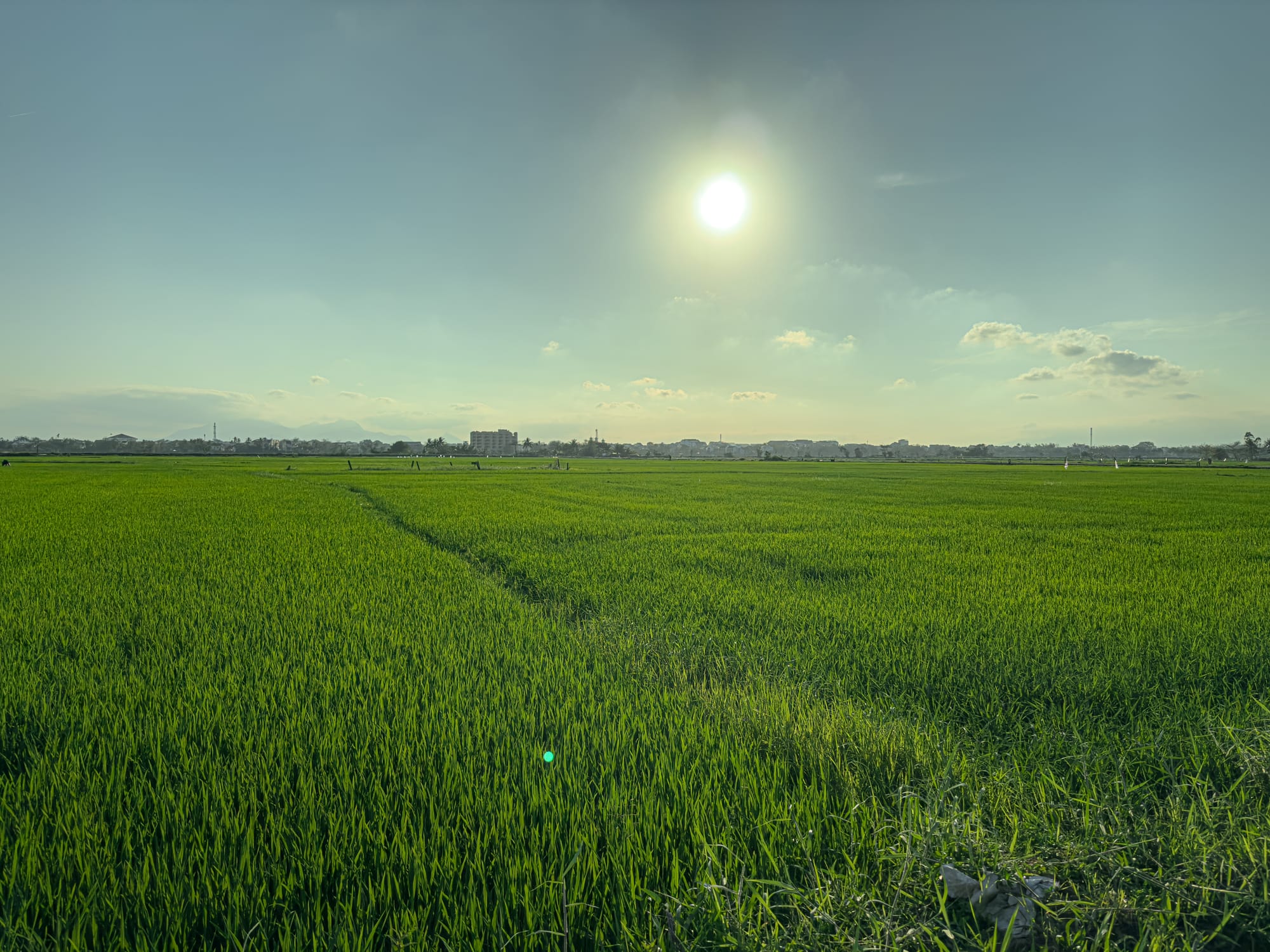
Generations of farmers perfected the craft of coaxing harvests from the land. The knowledge was passed down like heirloom seed: how to prepare the paddies, how to flood them just so, how to bend one’s back in patience through the long days of planting and harvesting. To this day, rice is not merely grown; it is tended with devotion, an act of cultural continuity as much as agricultural labor.
Daily life in the fields
To see farmers working in the rice fields of Hội An is to witness one of the most emblematic sights of Vietnam. In the heat of the afternoon sun or in the soft mist of early morning, they move with deliberate rhythm. Straw hats shield their faces, long sleeves protect their skin, and their bodies bend low over the shallow water. The labor is repetitive, yet deeply skilled: each seedling pressed into the earth by hand, each plant placed with care to ensure an even harvest.
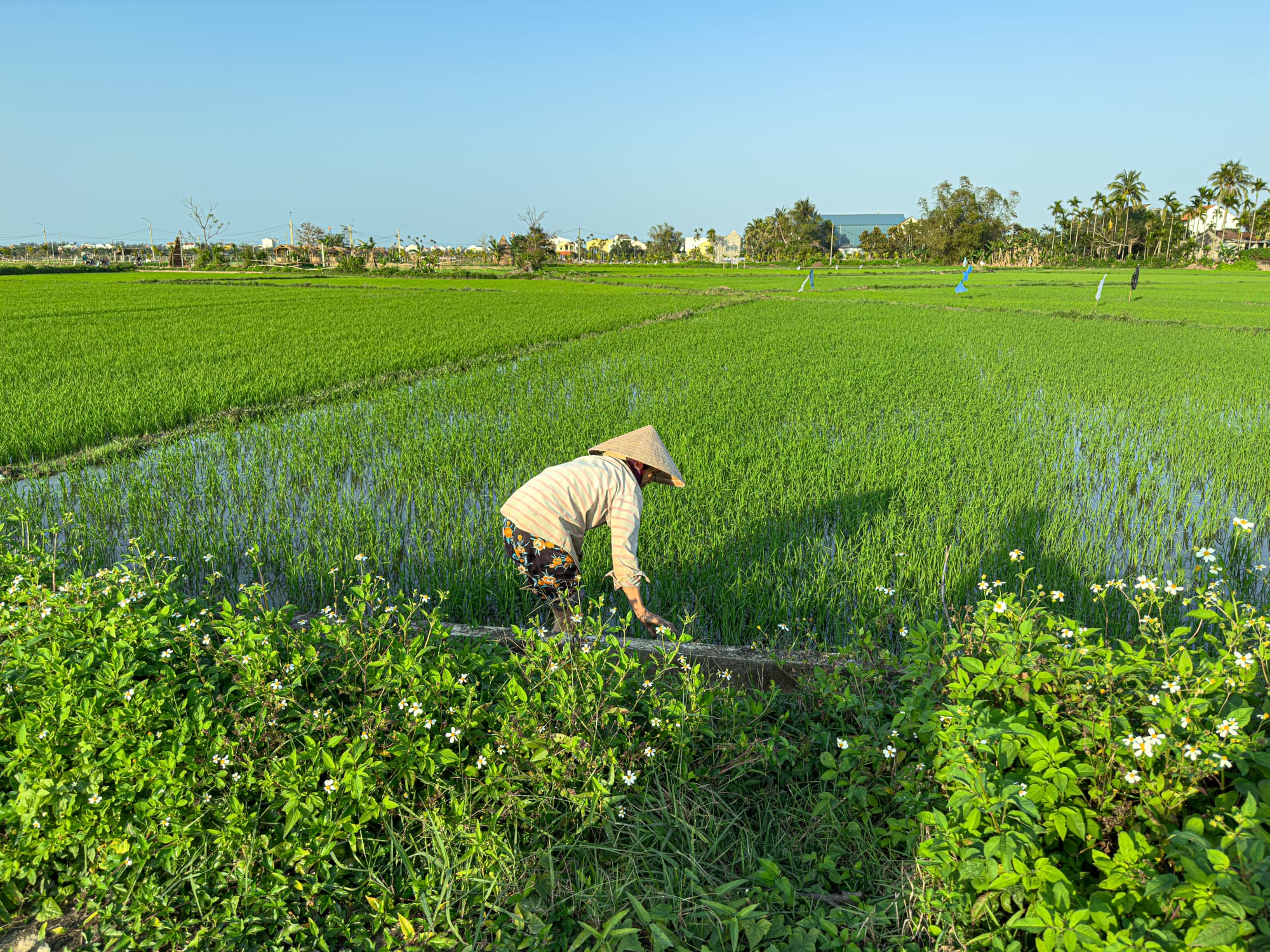
Water buffalo sometimes lumber alongside, helping to plow the mud with ancient strength. Irrigation channels, dug and maintained for generations, carry river water to flood the paddies in precise cycles. Families often work together, elders guiding the younger ones, the field becoming both workplace and classroom. It is a sight of resilience, persistence, and grace—strength quietly etched into the posture of bent backs and mud-streaked legs.
From field to plate
The journey of rice from seed to steaming bowl is long and elemental. It begins with plowing, when the fields are flooded and the soil softened to a slurry. Farmers plant the seedlings by hand, row after row across the shallow water. For months the plants grow, their stalks swaying like grass in the wind, brightening into an unbroken carpet of green. As the grains ripen, the fields turn golden, a signal that harvest has come.
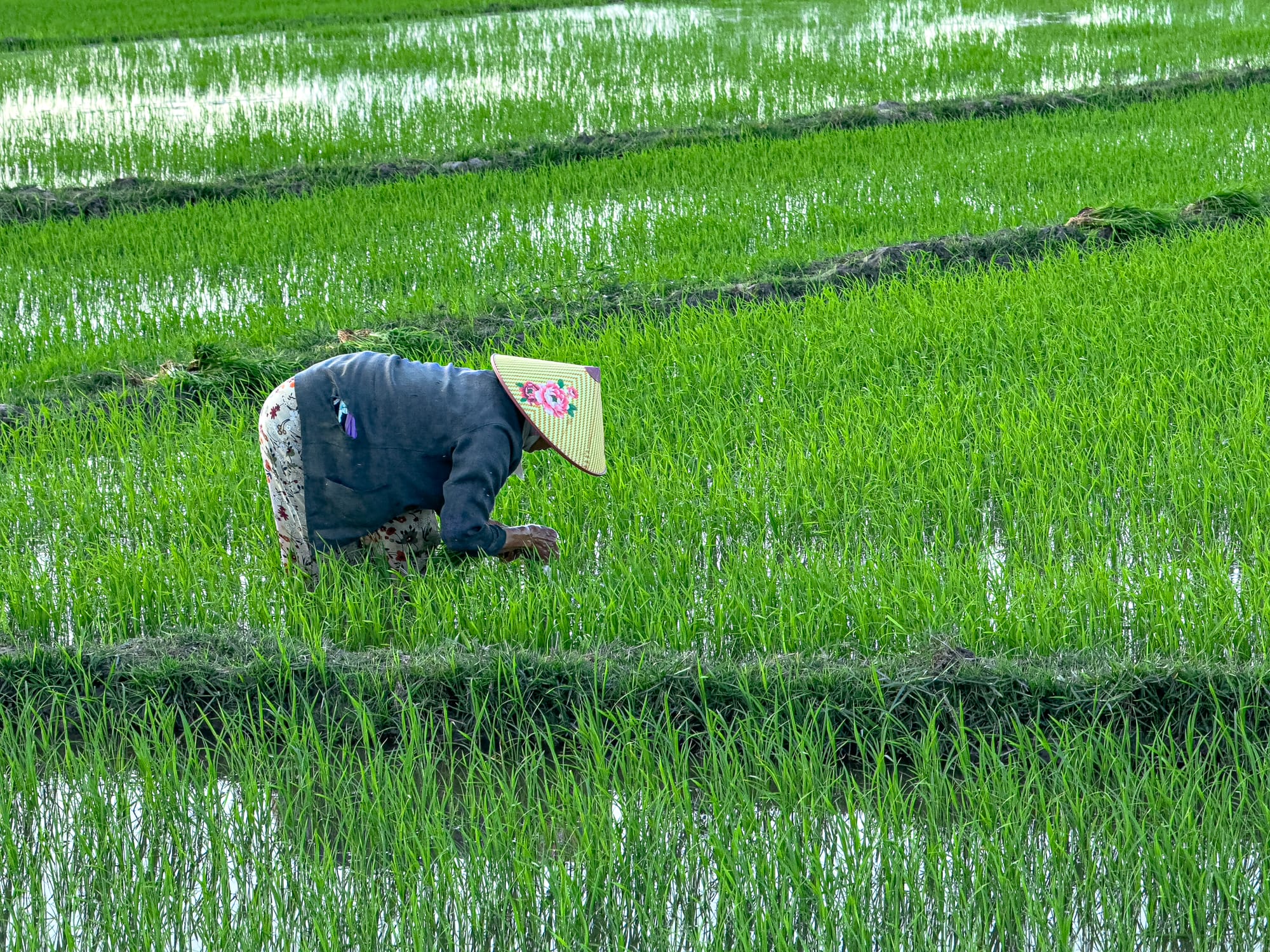
The harvest itself is communal. Sickles flash in the sun as farmers cut the stalks, bundling them to dry before threshing the grains loose. Traditionally, this was done by hand—beating stalks against wooden frames—but today mechanical threshers often hum alongside the workers. Once milled and polished, the grains become the staple food of Vietnam, appearing in every meal: steamed rice, rice noodles, rice paper for spring rolls, rice porridge, even rice wine. It is impossible to separate Vietnamese culture from rice; the grain is at once sustenance and symbol.
A living landscape
What makes the rice fields of Hội An so special is not only their role in daily life but their beauty as landscapes. They are open, luminous, and endlessly photogenic.
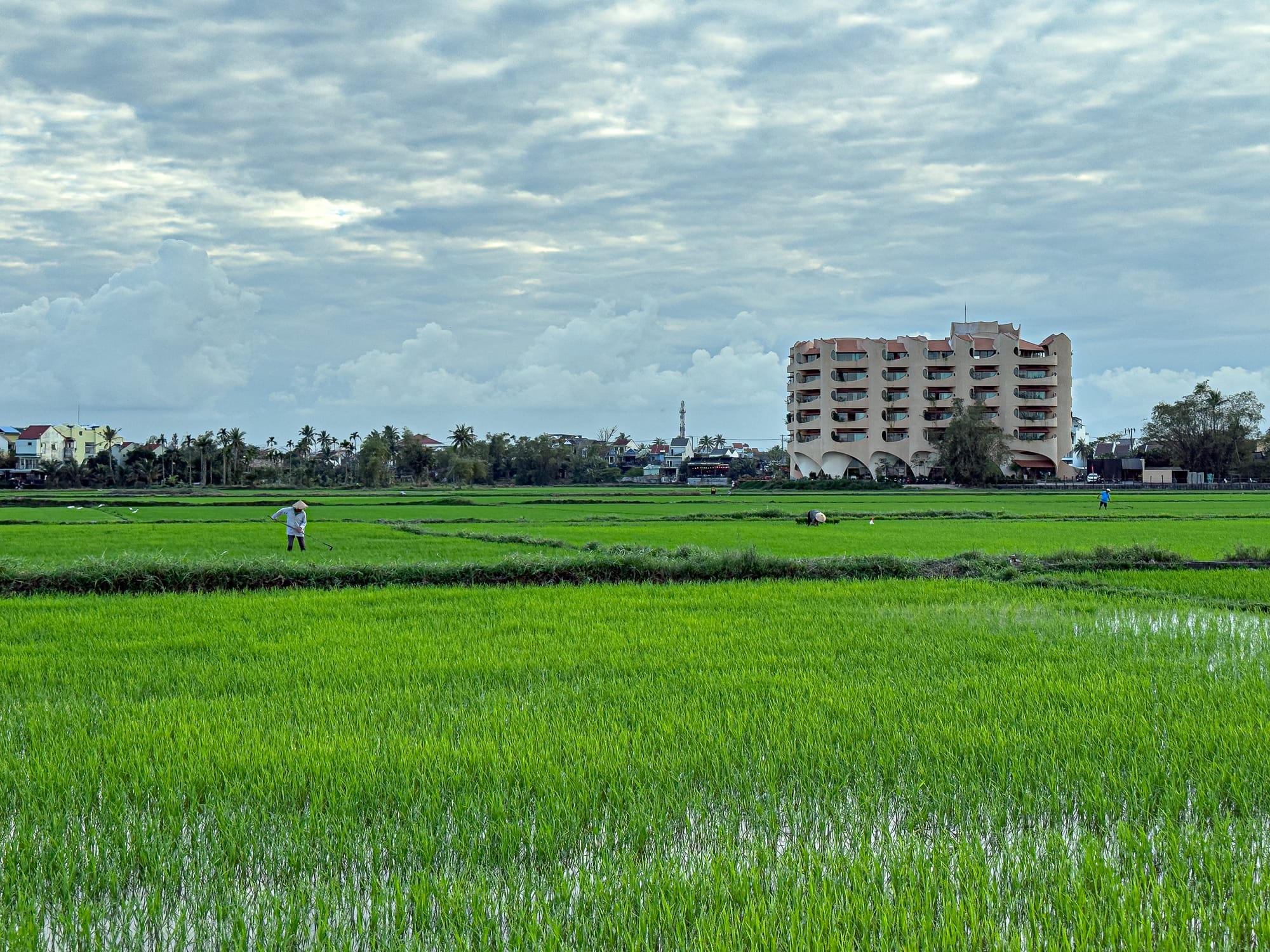
When the sun hangs low, the fields seem to glow, reflecting the light across every blade of rice. When a breeze passes, the plants ripple like water, creating waves of motion across the land. Standing at their edge, you can feel time slow down, the mind quiet, the air itself holding the calm of generations.
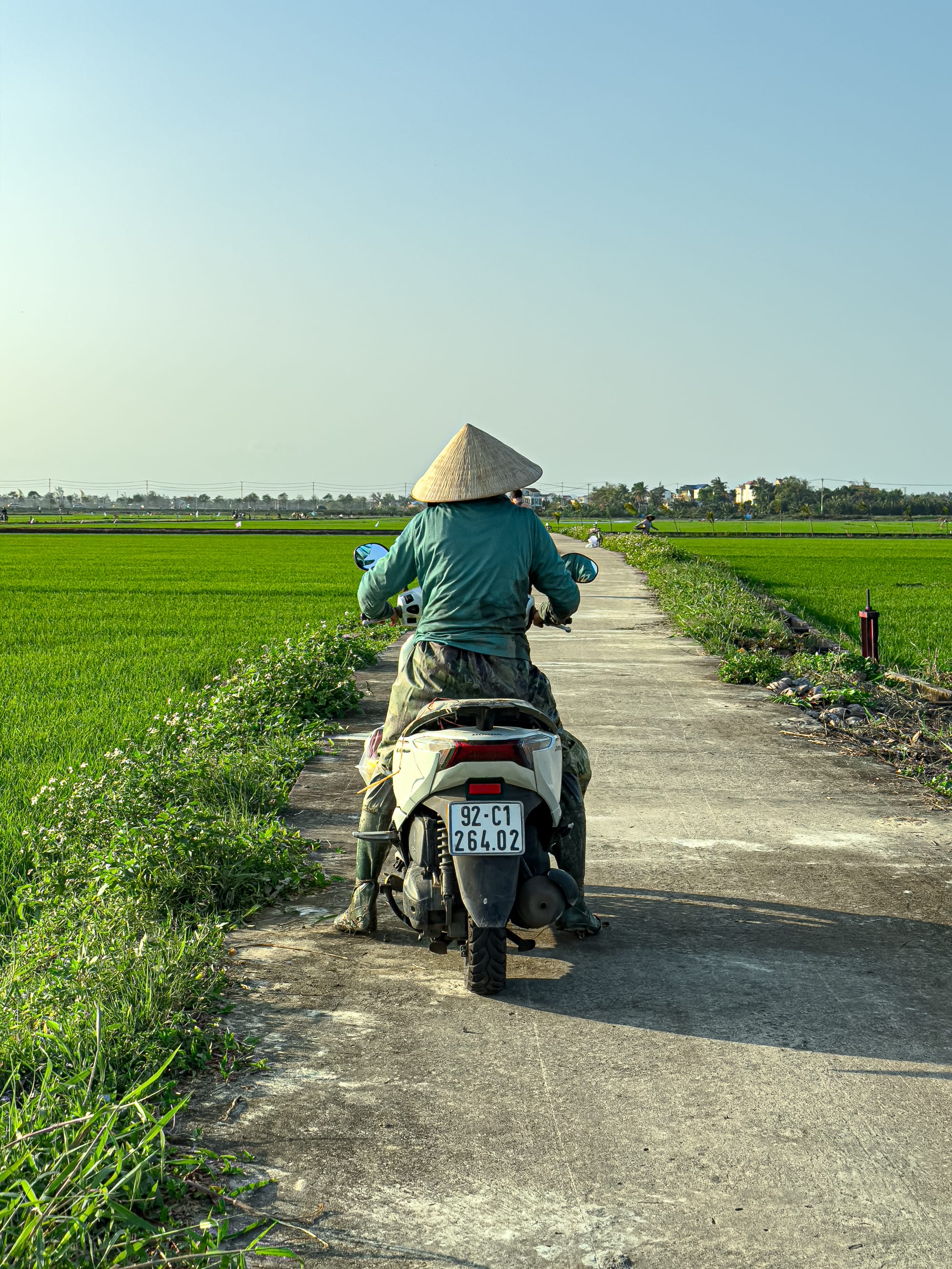
The fields are also alive with sound: the calls of birds swooping low, the buzz of cicadas, the occasional laughter of children crossing narrow paths on their way to school.
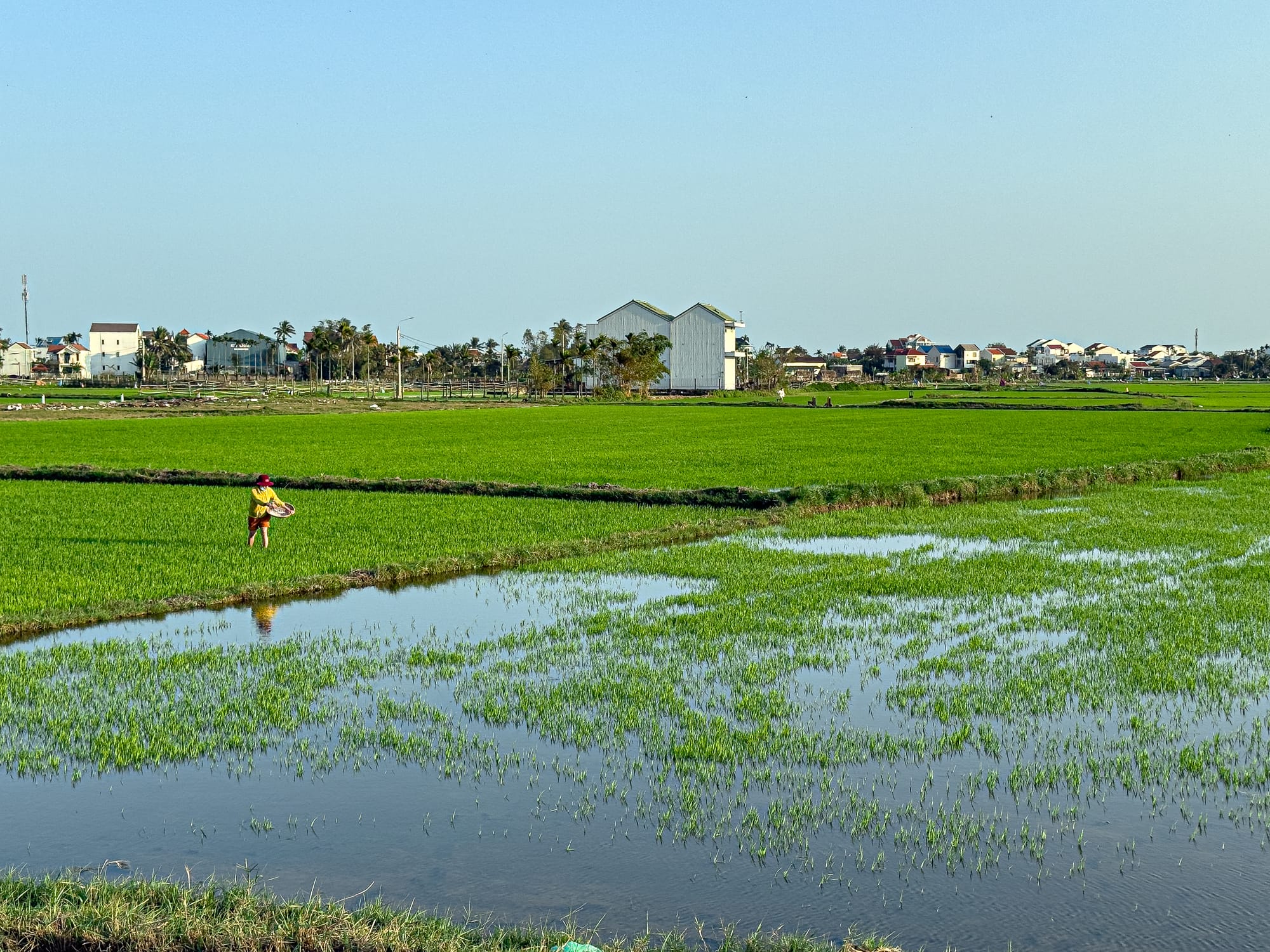
Farmers call to one another across the distance, their voices carried by the open air. And through it all, the steady rhythm of cultivation continues, a reminder that this beauty is born of constant work.
Rice fields and coworking
For those working remotely in Hội An, the rice fields are not distant. Hub Hoi An is literally surrounded by them, with sweeping 360-degree views.
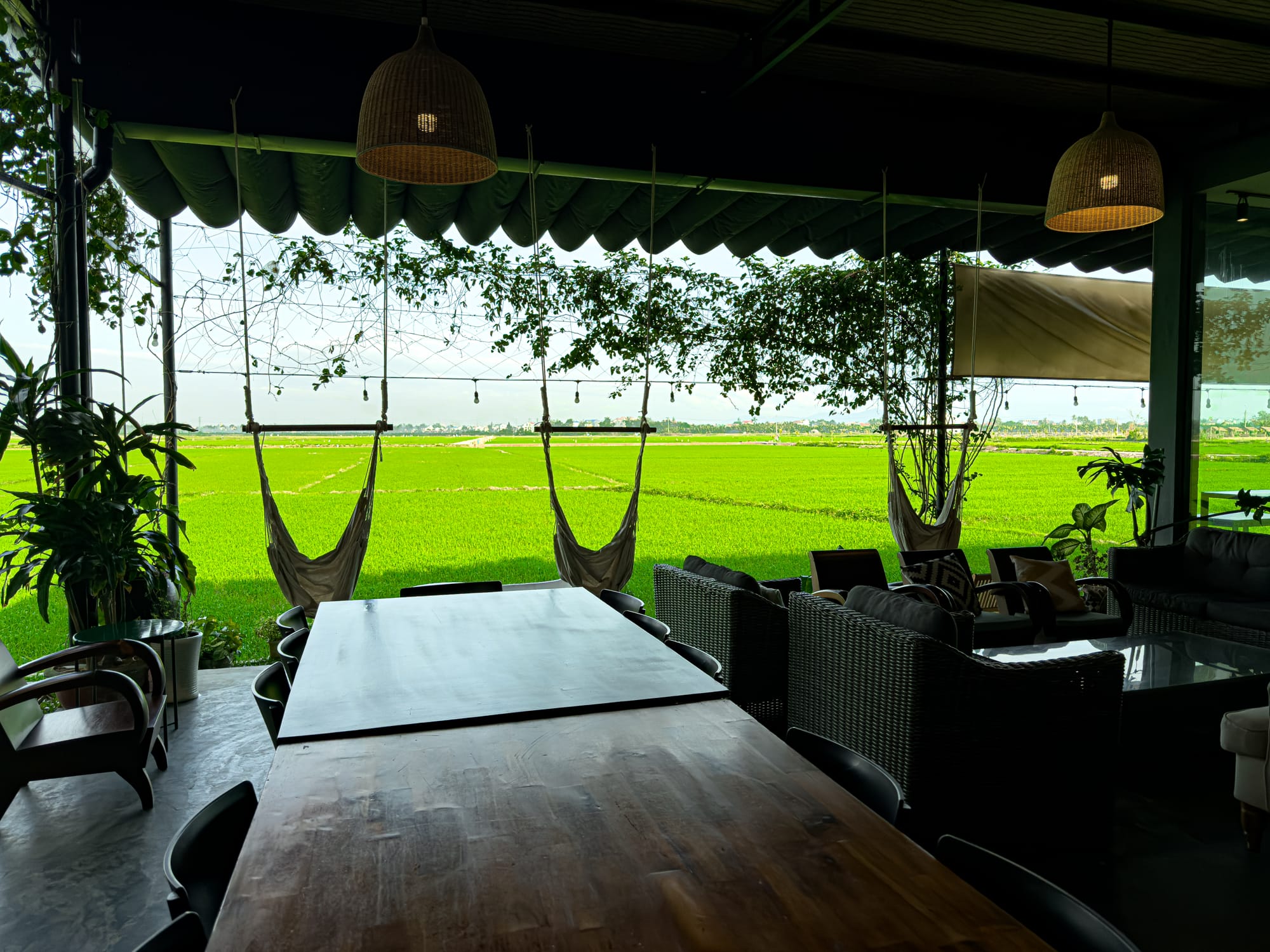
To sit at your desk and look up to see an expanse of emerald fields is to experience a kind of harmony rare in modern workspaces. It is as if your work takes place inside the very landscape itself, with farmers tending the paddies just beyond the glass.
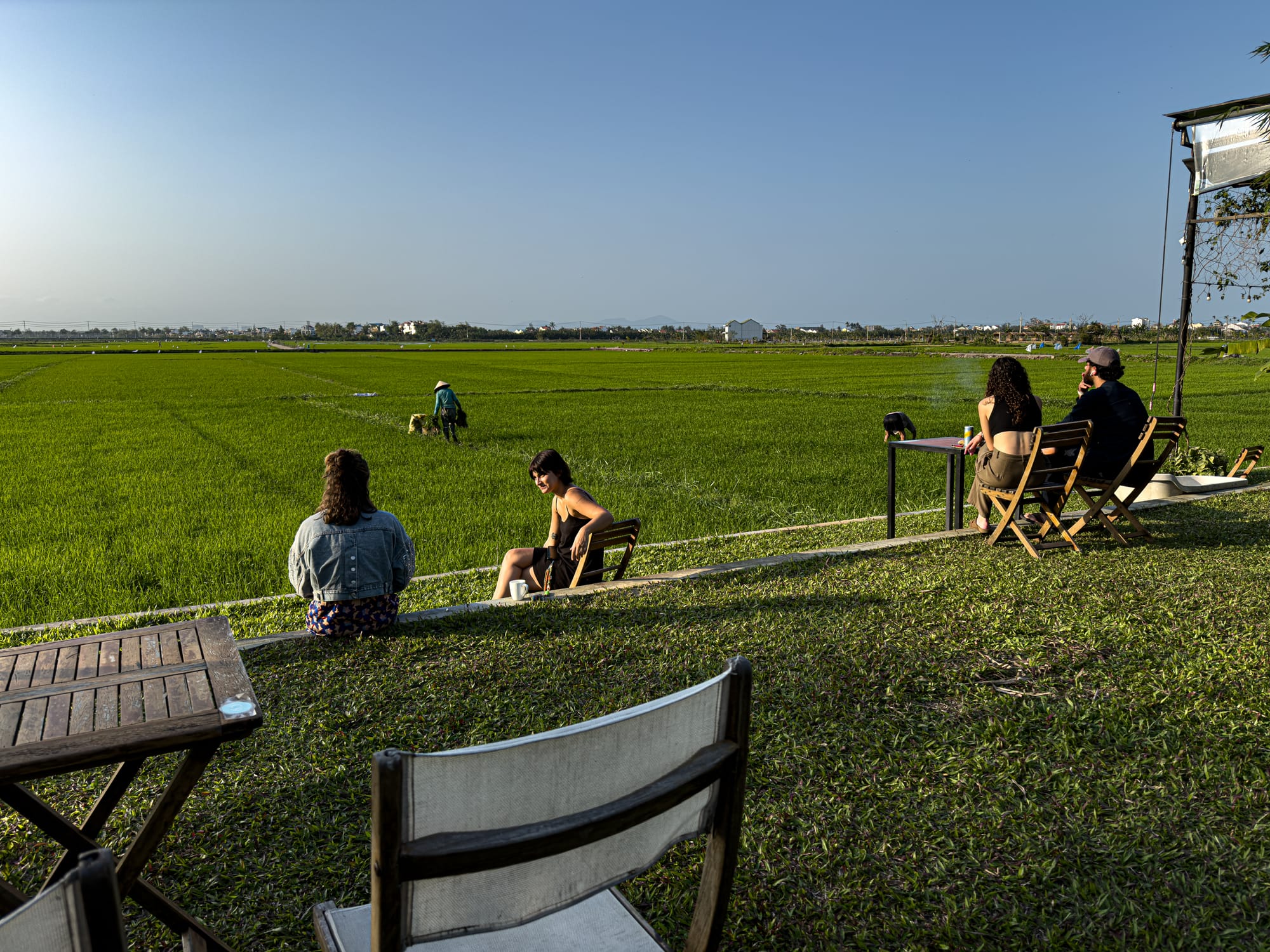
This closeness to the fields shapes daily rhythm for digital nomads too: stepping out from a call to wander a narrow path through the green, pausing at sunset as the light dissolves into gold, watching buffalo graze or farmers return home on bicycles.
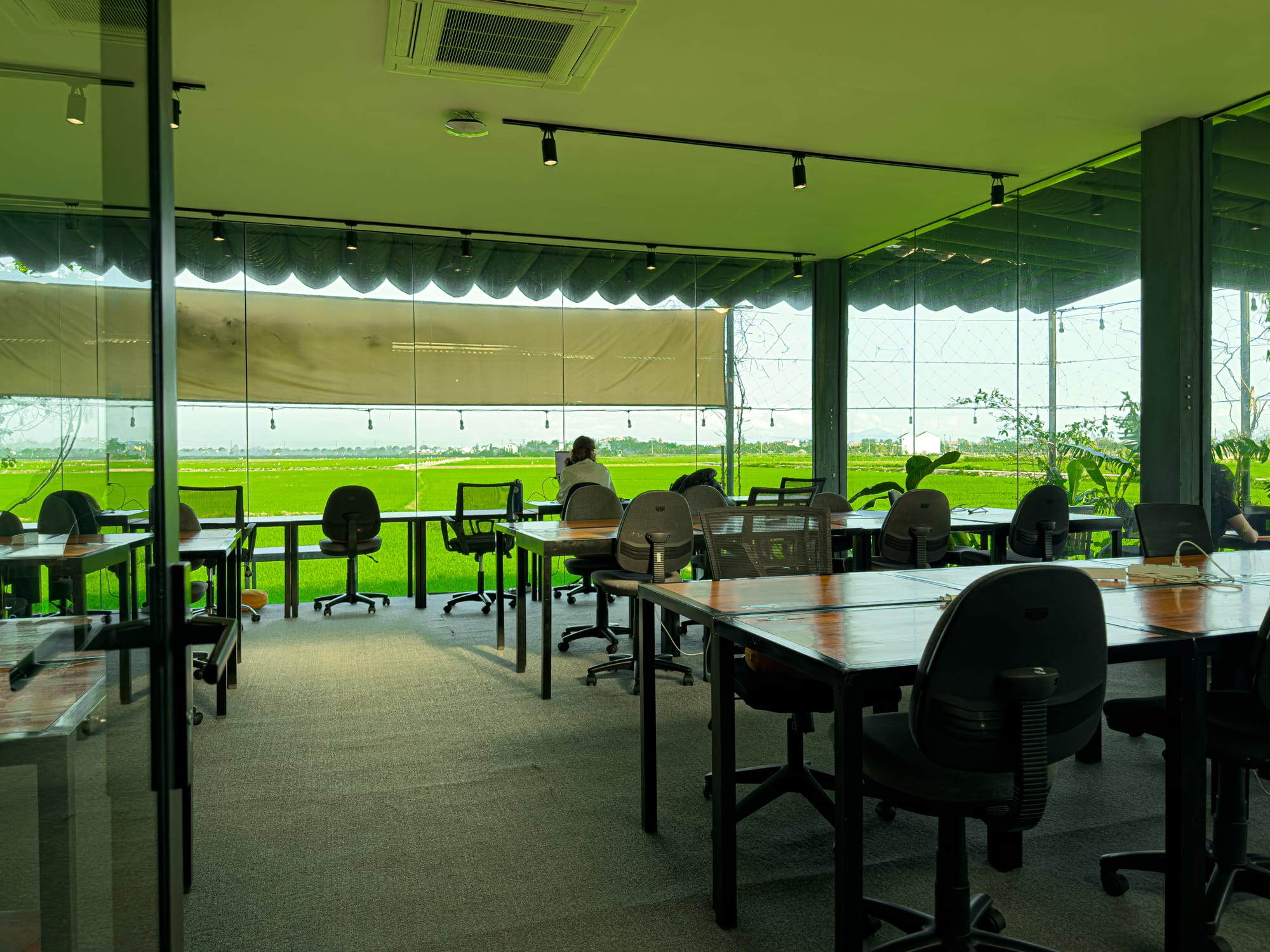
The rice fields are not simply backdrop; they are part of the texture of working and living here.
Cycling through the fields
Perhaps the most joyful way to experience the rice fields of Hội An is by cycling through them. The paths wind between paddies, narrow lanes just wide enough for a bicycle or motorbike. Riding slowly, you feel the air cool as you move, the fields stretching endlessly around you, the sky wide and open. Farmers may nod as you pass, children may wave from the edges, and everywhere the horizon is stitched in green.
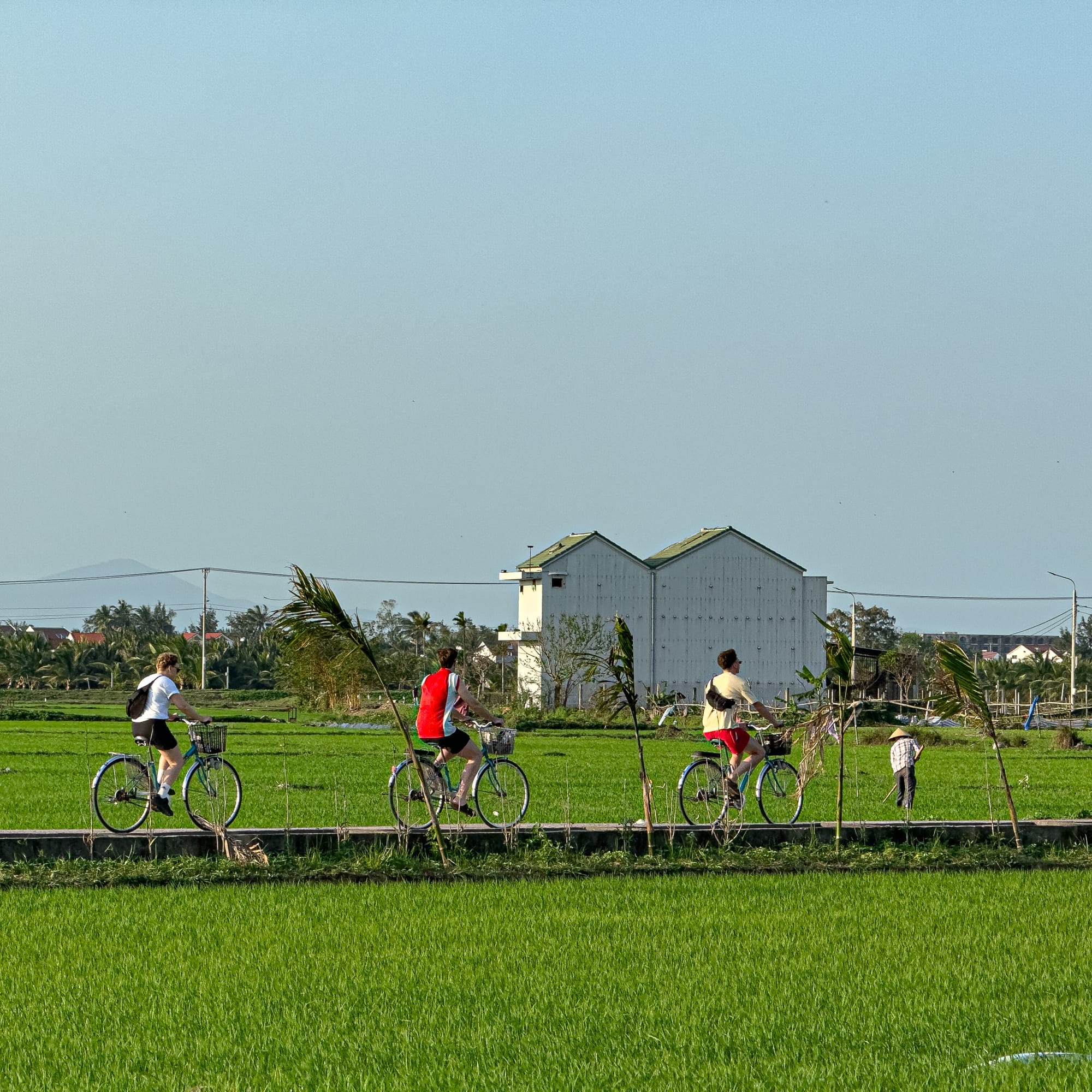
Cycling offers not only beauty but perspective. You see the fields as farmers do, from the ground, close enough to watch dragonflies skim the water or to notice the intricate irrigation channels feeding each plot. It is peaceful, meditative, and deeply grounding—an encounter with landscape that invites presence rather than speed.
For those wishing to immerse themselves more deeply, this cycling tour offers a guided ride through Hội An’s rice fields, weaving together culture, scenery, and gentle exercise. It is one of the most memorable ways to connect with this landscape, allowing you to see not only the beauty of the fields but the daily life that unfolds within them.
The emblem of Hội An
More than lanterns, more than riverfront cafés or bustling markets, the rice fields remain the true emblem of Hội An. They are its open heart, its emerald skin, its quiet breath. To stand among them is to understand something of the town’s rhythm: its patience, its persistence, its balance between beauty and work.
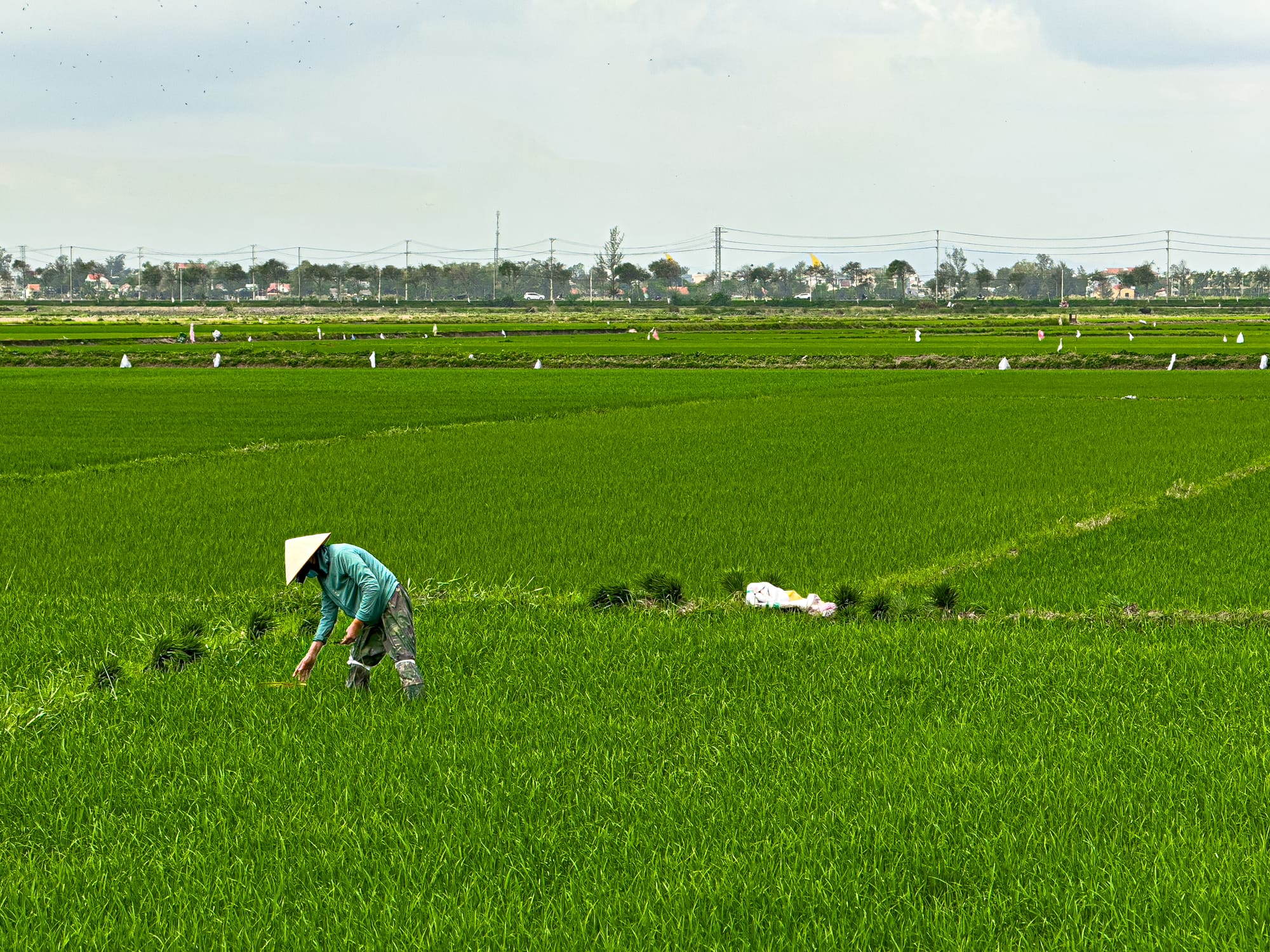
The rice fields are not a relic. They are alive, cultivated and essential, feeding both body and spirit. For visitors, they offer a space of peace, a chance to slow down, to see labor become beauty. For farmers, they remain livelihood. And for Hội An itself, they remain the grounding presence that ties past to present, land to people, sustenance to culture.
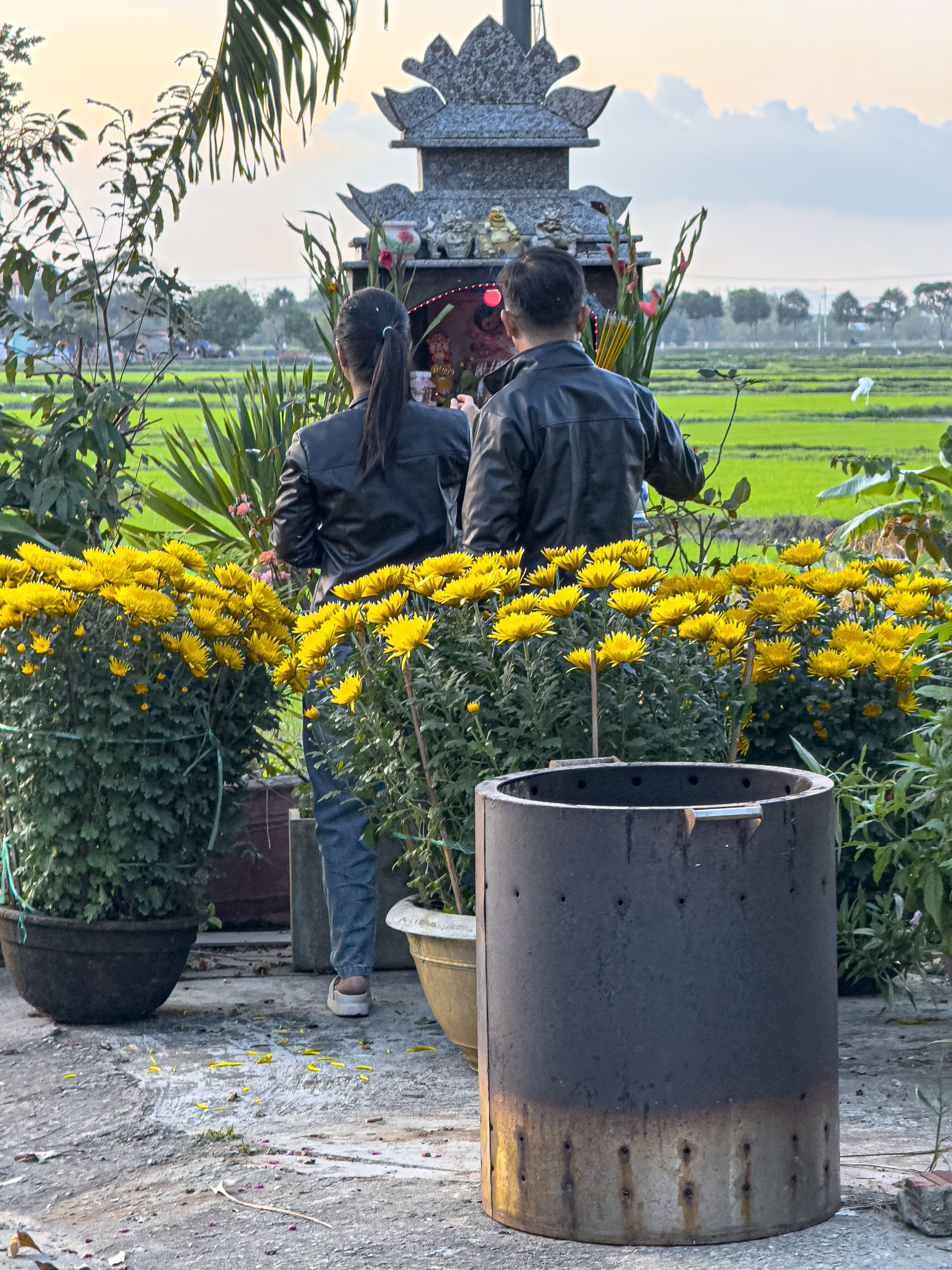
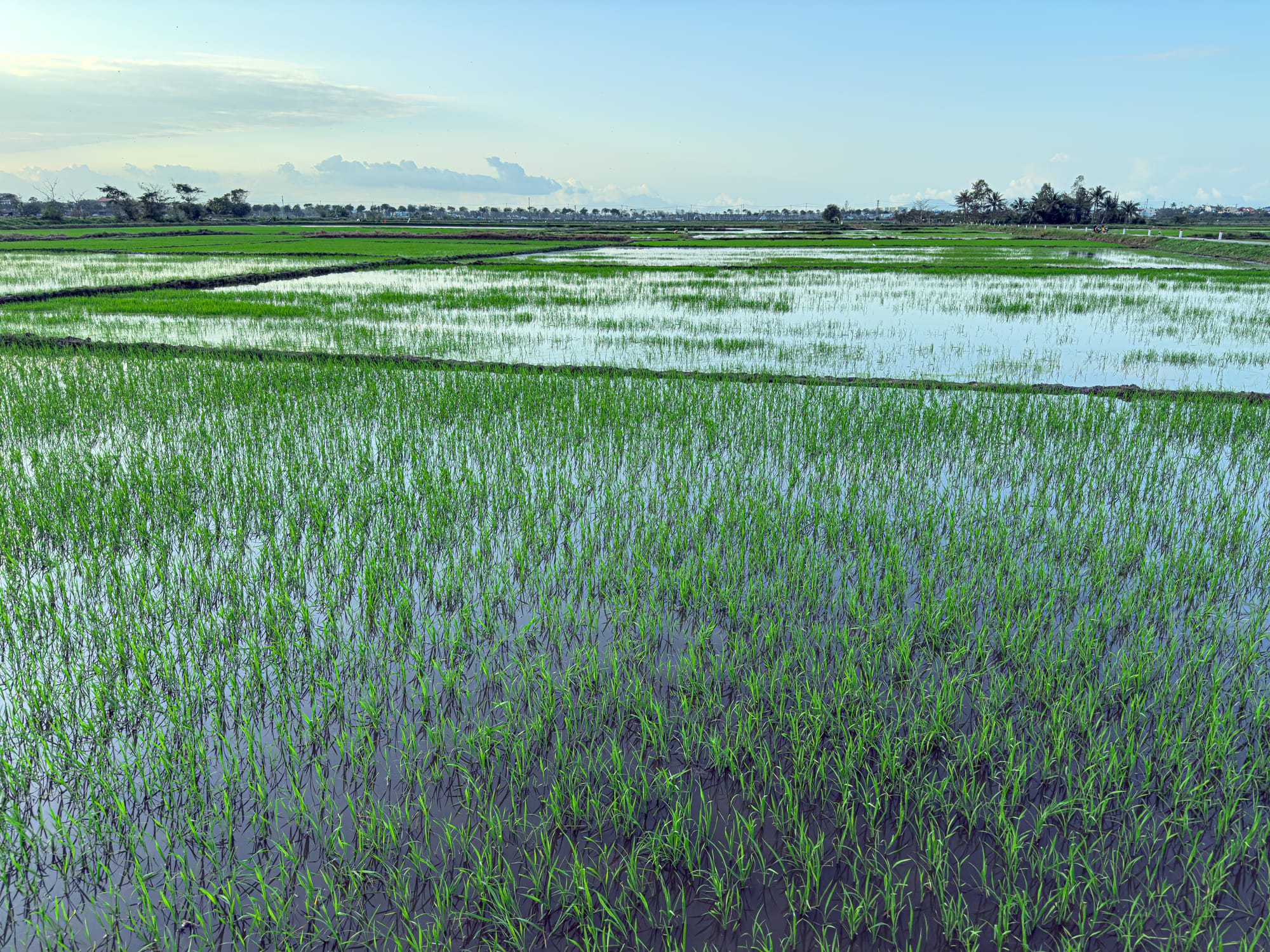
Offerings at a shrine and flooded paddies reflect the spirit and labor of Hội An’s rice fields
To visit Hội An without lingering in its rice fields would be to miss its essence. They are the green breath of the countryside, the living canvas on which generations have written their days. And they will remain, as long as the rivers flow and the sun rises, the most beautiful, vital presence in this land.






